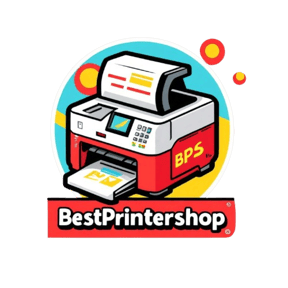Guide to Printer Types: Inkjet, Laser, Thermal, and Dot Matrix
Printers are essential for home, business, or specialized tasks, converting digital documents into physical formats. Learn about different printer types, their functions, and uses.
Praveen Kumar - Canon Printer Specialist
11/27/20247 min read
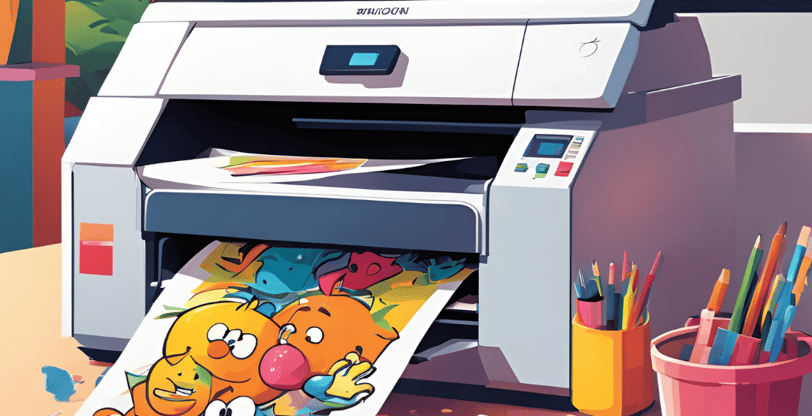

1. Inkjet Printers: Affordable and Versatile
Inkjet printers are the most common type used in homes today. They are known for their affordability and versatility, offering excellent print quality, especially when it comes to photos and color prints. These printers work by spraying tiny droplets of ink onto paper, which is controlled by the printhead’s movement back and forth across the paper. The ink droplets are so small that they are finer than a human hair, allowing for a high level of detail and accuracy in printed images.
How Inkjet Printers Work
Inkjet printers operate using liquid ink stored in cartridges. The ink is heated using a small heating element located inside the printhead, which causes it to form bubbles. As the bubbles expand, they force small drops of ink through tiny nozzles onto the paper. This process is called "thermal bubble technology" and is used by popular brands like HP and Canon. The ink is applied in precise patterns that form the image or text on the page.
There are two main types of inkjet printer cartridges:
Single-Cartridge Systems: Inexpensive and commonly used in entry-level inkjet printers, these systems use two cartridges—one for black ink and another for color (cyan, magenta, and yellow).
Multiple-Cartridge Systems: Higher-end inkjet printers, particularly those used for photo printing, often use four separate cartridges for black, cyan, magenta, and yellow. This allows for better color mixing and produces superior photo-quality prints.
Advantages of Inkjet Printers
High-Quality Prints: Inkjet printers are known for their ability to produce photo-realistic prints with rich colors and sharp details.
Affordable: These printers are generally less expensive upfront compared to laser printers.
Compact and Lightweight: Inkjet printers are smaller and lighter, making them ideal for home and small office setups.
Multi-functional Options: Many inkjet printers come with scanning, copying, and faxing capabilities, making them great all-in-one machines.
Disadvantages of Inkjet Printers
Ink Costs: Ink cartridges can be expensive, and frequent printing can add to the overall cost of ownership.
Ink Smudging: The ink used in inkjet printers can smudge if not handled properly.
Slower Print Speeds: Inkjet printers are generally slower than laser printers, especially when printing large volumes.
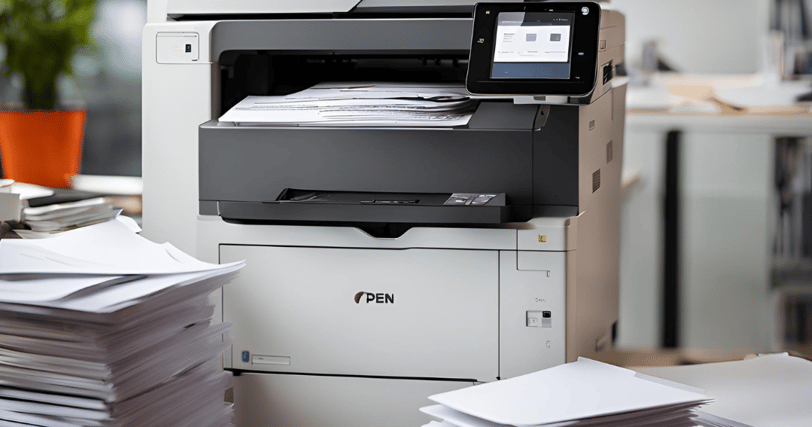

2. Laser Printers: Fast and Efficient for Text and Documents
Laser printers are commonly found in businesses and offices due to their speed, efficiency, and cost-effectiveness when printing text-heavy documents. They use a completely different technology than inkjet printers, relying on toner powder and a laser to produce prints.
How Laser Printers Work
Laser printers begin the printing process by placing an electrical charge on a rotating drum. The laser beam discharges specific areas of the drum to create a latent image of the document. Once the image is created, the drum is coated with fine toner powder, which sticks to the areas where the laser has drawn. The toner is then transferred onto the paper as it passes through the printer, and heat is applied to fuse the toner particles to the paper, resulting in a clean and high-quality print.
Laser printers are renowned for their efficiency, especially when printing text documents, as they are faster and more cost-effective than inkjet printers for large-volume printing.
Advantages of Laser Printers
Faster Print Speeds: Laser printers are faster at printing documents, especially in bulk, which makes them ideal for high-volume printing in offices.
Low Operating Costs: Although laser printers may have a higher upfront cost, they are more economical in the long run due to the lower cost of toner compared to ink.
High-Quality Text Prints: Laser printers are exceptional at producing sharp, clean text and simple graphics.
Durable Toner: Toner cartridges last longer than ink cartridges, reducing the frequency of replacements.
Disadvantages of Laser Printers
High Initial Cost: Laser printers are typically more expensive to buy than inkjet printers.
Limited Photo Quality: While laser printers produce excellent text prints, their photo printing capabilities are not as good as inkjets.
Larger Size: Laser printers are generally bulkier and less suitable for smaller spaces.
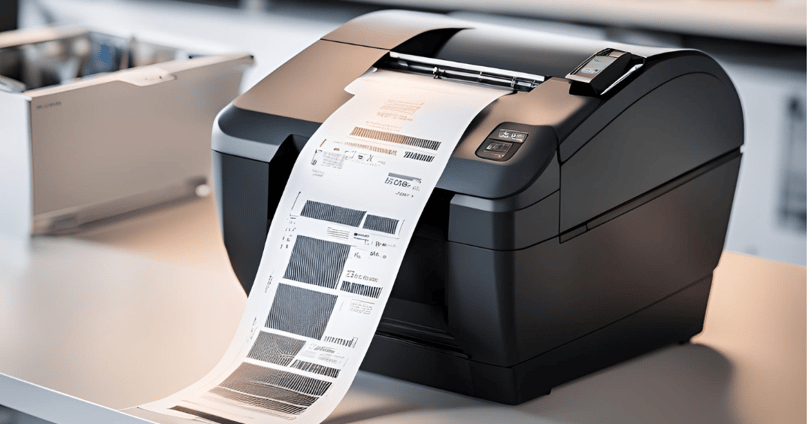

3. Thermal Printers: Quiet and Specialized for Labels and Barcodes
Thermal printers are used for very specific printing tasks, such as creating receipts, labels, and barcodes. Unlike inkjet and laser printers, thermal printers operate without the need for ink or toner. Instead, they use heat-sensitive paper and print by applying heat directly to the paper’s surface.
How Thermal Printers Work
Thermal printers use heat to activate the chemicals embedded in thermal paper, which turns the paper black when exposed to heat. There are two types of thermal printing technologies:
Direct Thermal Printing: This method uses heat-sensitive paper that darkens when heated. It’s often used for printing receipts and shipping labels. The downside is that the print may fade over time, especially if exposed to heat or sunlight.
Thermal Transfer Printing: This method uses a heated ribbon to transfer ink onto the paper. It produces more durable prints and is typically used for creating high-quality labels and barcodes.
Advantages of Thermal Printers
Quiet Operation: Thermal printers are incredibly quiet since they do not use any impact mechanism or ink.
Speed: Thermal printers are fast, making them suitable for high-volume tasks like receipt printing.
Low Maintenance: Since they have fewer moving parts than inkjet or laser printers, thermal printers require less maintenance.
Disadvantages of Thermal Printers
Limited to Specific Uses: Thermal printers are mainly used for labels, barcodes, and receipts, so they are not versatile for general-purpose printing.
Cost of Thermal Paper: Thermal paper can be more expensive than regular paper, and the print may degrade over time.
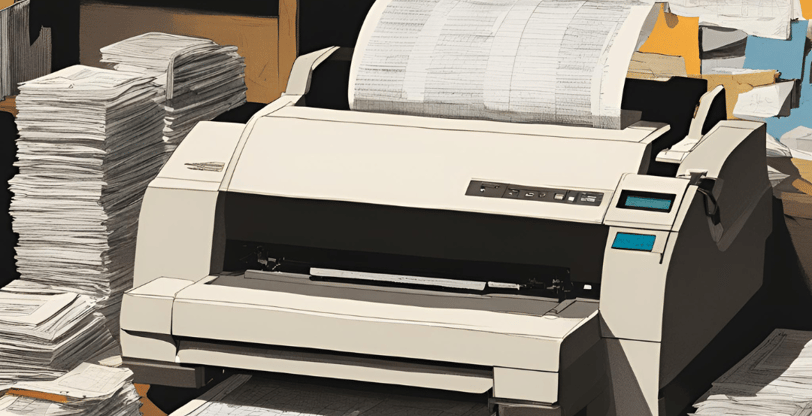

4. Dot Matrix Printers: Durable but Outdated
Dot matrix printers were once widely used in offices, but today, they are mostly obsolete, replaced by inkjet and laser printers. However, they still have some niche uses due to their unique characteristics.
How Dot Matrix Printers Work
Dot matrix printers are impact printers, which means they physically strike the paper with a printhead that contains small pins. These pins hit an inked ribbon, which leaves a mark on the paper. The printhead moves across the paper line by line, producing dots that form characters or images. The resolution is lower compared to modern printers, but dot matrix printers can print multiple copies of documents simultaneously (such as carbon copies), making them useful for some specialized tasks.
Advantages of Dot Matrix Printers
Durability: Dot matrix printers are incredibly durable and can last a long time, even in harsh environments.
Multiple Copies: They are capable of printing multi-part forms (carbon copies), which makes them valuable in certain industries.
Lower Operating Costs: The cost of paper and ink ribbons is relatively low, especially compared to inkjet printers.
Disadvantages of Dot Matrix Printers
Poor Print Quality: The print quality of dot matrix printers is significantly lower than that of inkjet or laser printers, especially for photos and detailed graphics.
Noisy Operation: These printers are very noisy due to the impact mechanism.
Limited Functionality: Dot matrix printers are not as versatile as modern printers and are generally used only for specific tasks.
Conclusion: Choosing the Right Printer for Your Needs
When deciding which printer is right for you, it's important to consider what you will be printing most often and your budget. Here’s a quick summary of which printer might work best in different scenarios:
Inkjet Printers: Best for home users who need high-quality photo prints and occasional document printing.
Laser Printers: Ideal for businesses or individuals who print large volumes of text-heavy documents and require fast, efficient printing.
Thermal Printers: Perfect for printing labels, barcodes, and receipts where print quality is secondary to speed and efficiency.
Dot Matrix Printers: Suitable for environments where durability and multi-copy printing are required, but not recommended for general office or home use.
By understanding the differences between these types of printers, you can choose the one that best suits your needs, whether it’s for home use, business, or specialized applications.
Frequently asked questions
Are color laser printers more expensive than black-and-white laser printers?
Yes, color laser printers are typically more expensive than black-and-white (monochrome) laser printers, both in terms of initial cost and ongoing maintenance. Color laser printers require additional toner cartridges (cyan, magenta, yellow, and black) and are generally more complex, which drives up the price.
What is the purpose of a multi-function printer (MFP)?
A multi-function printer (MFP) is a device that combines several functions in one machine. MFPs typically include the ability to print, scan, copy, and sometimes even fax. These printers are highly convenient for both home and office use, as they eliminate the need for multiple standalone devices.
What is the difference between a wireless and wired printer?
A wireless printer connects to your computer or network via Wi-Fi, Bluetooth, or another wireless technology. This allows you to print from multiple devices without the need for physical cables. A wired printer, on the other hand, requires a direct connection to a computer or network via a USB or Ethernet cable.
Can a printer be used without a computer?
Yes, many modern printers, especially inkjet and laser models, can be used without a computer. These printers often come with features like wireless connectivity, which allows them to print directly from mobile devices, tablets, or cloud services.
Do laser printers only print in black and white?
No, laser printers can print in both black and white and color. Color laser printers use a similar process to black-and-white laser printers but include additional toner cartridges for cyan, magenta, and yellow. These printers are excellent for businesses that need to print high-quality color documents quickly and efficiently.
Are inkjet printers good for photo printing?
Yes, inkjet printers are generally considered the best choice for photo printing. They can produce high-quality prints with rich colors and fine details, especially when using high-quality photo paper. Inkjet printers also allow for greater color mixing, thanks to their use of multiple ink cartridges (cyan, magenta, yellow, and black) that result in better color accuracy.
Thanks For Reading :)
Insights
Explore the latest in printer technology and tips.
Resources
Support
contact@bestprintershop.com
+918920029543
© 2024 BestPrinterShop . All rights reserved.
